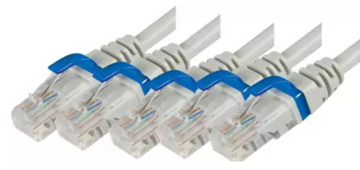The Truth about Twisted Pair Patch Cords Take

In network and data transmission applications, twisted pair patch cords are frequently used to connect devices to local area networks (LANs), routers, switches, and other network equipment. These cords are made of two or more insulated copper wires that have been wound in a certain way to reduce crosstalk and electromagnetic interference, which can deteriorate the signal quality.
What you need to know about twisted pair patch cords is as follows:
- Categories of twisted pair patch cords: Twisted pair patch cords are categorized based on the performance specifications and bandwidth requirements of the network. The most common categories are Cat5, Cat5e, Cat6, and Cat6a, with each category having different levels of performance and maximum transmission speeds.
- Importance of twist rate: The twist rate or the number of twists per inch in a twisted pair patch cord is an important factor that determines its performance. A higher twist rate reduces electromagnetic interference and crosstalk, resulting in better signal quality.
- Length limitations: Twisted pair patch cords have length limitations that depend on the category and the transmission speed of the network. For example, Cat5 and Cat5e cords can transmit data up to 100 meters, while Cat6 and Cat6a cords can transmit data up to 55 meters and 100 meters, respectively.
- Compatibility: Twisted pair patch cords are compatible with most network devices and infrastructure, including routers, switches, and network interface cards. However, it's important to ensure that the cord matches the category and performance specifications of the network to ensure optimal performance.
- Different types of connectors: Twisted pair patch cords come with different types of connectors, including RJ45, which is the most common type used in Ethernet networks. Other types of connectors include RJ11, RJ12, and TERA.
- Quality and durability: The quality and durability of twisted pair patch cords can vary based on the manufacturer and materials used. It's important to choose cords from reputable manufacturers and ensure that they meet industry standards and certifications to ensure optimal performance and durability.
In summary, twisted pair patch cords are an important component of network infrastructure and play a crucial role in ensuring optimal signal quality and performance. Understanding their key features and specifications can help in choosing the right cords for a network and avoiding issues related to compatibility, performance, and durability.

